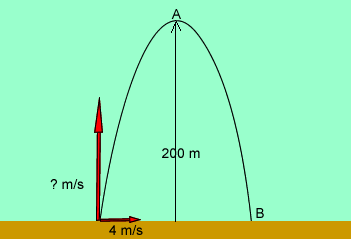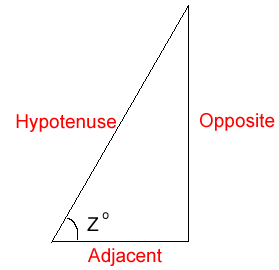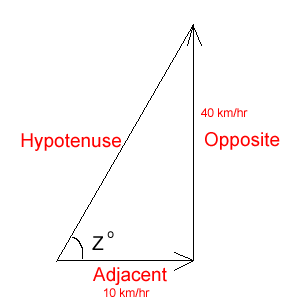Click
to hide the solution
Remember that the
horizontal and vertical velocities are independent of each other.
To work out the
horizontal velocity we use the formula d/t. Now d = 400m and t = ?
To calculate t we use the formula d = 0.5gt2
=> 400 = 0.5 X 10 X t2
=> 80 = t2
=> 8.94s = t
So a vertical distance of 400m must be covered in 8.94s. The vertical velocity
must be
v = 400/8.94 = 44.74 m/s.
To calculate
the horizontal velocity again we use the formula v = d/t.
Now d =600 and t = (2 X 8.94) = 17.88s.
So v = d/t
=>v = 600m/17.88s
=>v = 33.56 m/s
As the cannon ball
passes over the peak its vertical velocity has shrunk to zero. It only has
horizontal velocity so it passes at a speed of 33.56 m/s
The cannon ball
will strike the target at a speed equivalent to its initial speed. We calculate
the initial speed by working out the magnitude of the resultant initial
velocity vector.
We use Pythagorean Theorem
s2 = (hv)2 + (vv)2 Where s =magnitude of
initial velocity vector, hv = initial horizontal velocity and vv = initial
vertical velocity.
=> s2 = (33.56)2 + (44.74)2
=> s = 55.93 m/s


